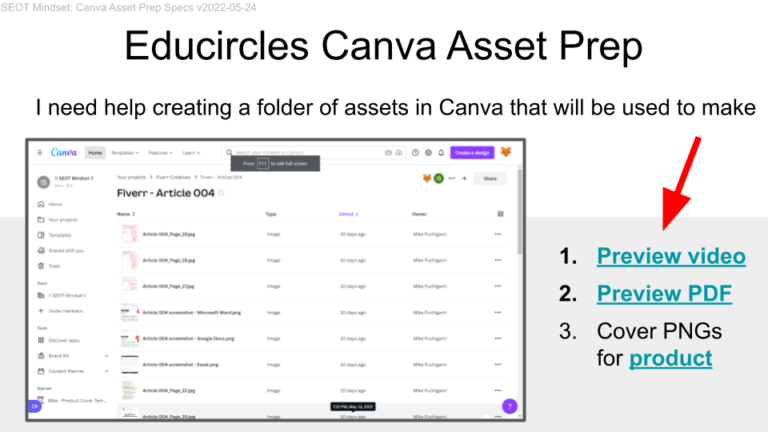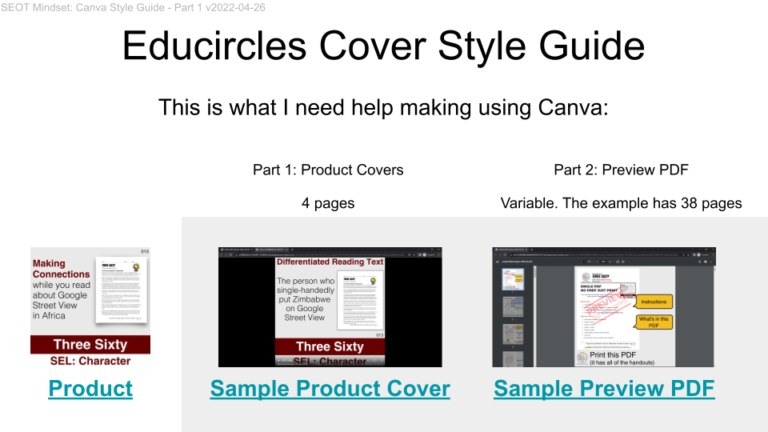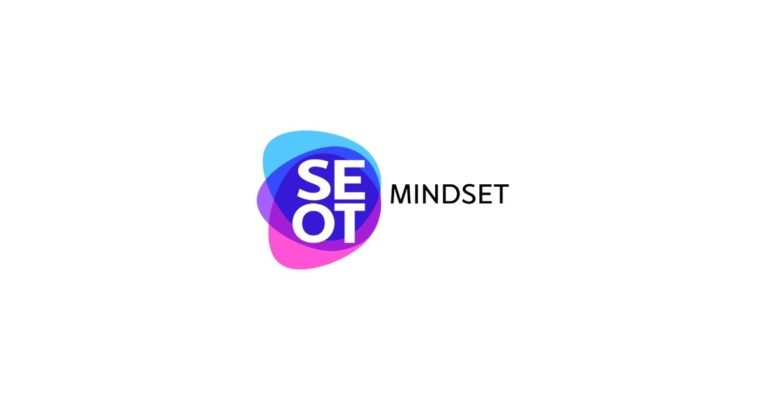People didn’t always use Post-It® Notes.
I’m looking for independent contractors who can write something like this.
Not everyone loved the new sticky note. Should the team at 3M™ continue working on this product or move on to something else?
Imagine you invented the most incredible product in the world. What would you do if people didn’t buy it?
3M is a company that has been creating innovative products for over a century. They make tapes, personal protective equipment, and medical resources. You may recognize one of their most famous products, the Post-It Note!
According to the 3M website, the story goes that in 1968, Dr. Spencer Silver tried to invent a super-strong adhesive. The superglue didn’t work. Instead, he accidentally created a sticky substance that ironically didn’t stick things together very well.
“Dr. Spence Silver, a 3M scientist, is busily researching adhesives in the laboratory. In the process, he discovers something peculiar: an adhesive that sticks lightly to surfaces but does not tightly bond to them.”
SOURCE: 3M WEBSITE
One day, another scientist at 3M, Art Fry, wanted a bookmark that wouldn’t fall out. He wanted something only slightly sticky to stay in place but not too sticky that it would damage the paper. Here was a perfect use for Dr. Silver’s discovery, and the rest is history. Or is it?
Post-It Notes are often touted as an example of a life-changing accidental invention. But that’s not the whole story.
It’s important to recognize that there is some controversy over the credit for the invention of the sticky note. In 1997, inventor Alan Amron sued 3M, claiming he was the true inventor of the sticky product:
“Amron said his idea in 1973 came about with chewing gum. He was looking for a way to stick a note on his refrigerator for his wife and used gum, providing inspiration for the adhesive he would use on his Press-on Memo. That year he took the sticky notes to a New York trade show and met briefly with two 3M executives, Amron said, but nothing came of the meeting.”
SOURCE: LA TIMES
Regardless of where the original idea came from, another obstacle faced the Post-It Note from becoming a success. How do you get people to love something they didn’t know they needed?
When creating a new product, a business usually conducts market research to see what people think. You sample a few people in different areas to get a sense of how your product will do. If your product is a flop when you test it with these small groups of people, it’s a sign that your product might not do well across the country. A business might decide to cut its losses and develop another product.
In 1978, when 3M introduced their new product to different test markets, people had mixed reactions to the Post-It® Notes. Many people weren’t sure if this was something they wanted to use.
Crazy, right? Today, sticky notes are everywhere. But remember, this was a time before sticky notes were invented!
What would you do?
You have this fantastic product that you’ve created. You see a lot of value. You want people to use it. But, when you asked a few people to see if this product might be successful, the feedback was mixed. Some people like it, and some don’t.
Do you continue with the product, or do you scrap it and try something new?
The team at 3M thought that success depended on people actually trying the sticky notes firsthand to see how useful they could be. The company felt that if they could get Post-It Notes into the hands of office workers, people would fall in love with the product. 3M needed to see positive results in a test market before taking the risk to launch the product nationwide.
So, the company went to Boise, Idaho, and tried something new. This time, 3M decided to ask many people in one area what they thought about Post-It Notes, but only after using the product themselves. Today, this is known as the Boise Blitz.
3M simply flooded the office supply industry with samples and asked consumers what they thought afterward. Using this approach, it looked like Post-It Notes would be popular among consumers.
“An astonishing 90 percent of consumers who try the product say they’ll buy it!”
SOURCE: 3M WEBSITE (ARCHIVED)
Based on this market research, the managers at 3M decided to take this product, polish it up and sell it. In 1980, Post-It Notes were launched in the US, and they’re a hit!
Post-It Notes from an SEOT perspective.
Let’s take a moment to break down the story behind Post-It Notes to see what we can learn about having a growth mindset.
Perseverance means not giving up. One way to not give up is to realize that although there are always obstacles in life, there are also always things we can try to overcome challenges.
3M’s Post-It Notes are a great example of how we can use strategies, effort, optimizing, and tinkering to overcome obstacles.
Strategy
I like the story of the Boise Blitz because it’s an example of changing strategies to overcome an obstacle.
In 1978, the team at 3M had a problem. People weren’t loving this new Post-It® Notes product that they were developing.
I imagine the inventors shaking their heads. Post-It Notes were a fantastic innovative idea. Why weren’t these people loving it?
Someone probably realized that people in the test markets had mixed reviews because some could see its usefulness in day-to-day life, but not everyone.
So, the team at 3M changed strategies.
If they simply asked more groups of people if they would buy this new sticky note product, they would probably get more of the same mixed results. They needed a different approach if they wanted different results.
The old strategy focused on gathering people and asking them if they would buy the product. The new strategy was about getting the Post-It® Notes into the hands of office workers so they could try them out. Then, 3M followed up by asking these people if they would buy the sticky notes after they had used the free sample.
Sometimes, you need to change what you do to get a different result.
Effort
Overcoming obstacles requires effort. A big problem in this story was that people didn’t seem interested in Post-It Notes.
The marketing team at 3M decided to shift strategies to see how people felt after using the product themselves. The new survey strategy was to give free samples to the office supplies industry in Boise, Idaho.
But, a new strategy alone is not always enough. The team had to put in some serious effort for this plan to succeed.
A little bit of effort might have involved going to a few people, giving them some free samples, and asking what they thought. The team at 3M didn’t do that. They likely thought it wouldn’t be enough effort to produce the significant results they were looking for.
Instead, they put in a lot of effort and did a blitz; they gave out a ridiculous amount of free samples. In this case, the marketing team went above and beyond by “saturating the office supply industry with samples.” (Source: 3M website.)
Saturation means you’ve done something so much that it’s impossible to do more. For example, when you first add hot chocolate powder to water and stir, the powder will dissolve in the water. If you keep adding hot chocolate powder, there’s a point where it can’t dissolve anymore. This is a saturated solution. Any extra powder you add will just stay as clumps of powder in your hot chocolate.
By trying a blitz and saturating the office supply industry with samples, the team at 3M collected market research that showed consumers loved this product once they tried it.
Optimize
Optimizing happens when you measure something to see if you can improve results.
Here’s how to optimize what you’re doing. First, you keep track of how things are going. Then, you develop theories about why you’re getting the current results. Once you have some theories, you try new things to improve your results.
In 1978, the marketing team at 3M showed their Post-It Notes idea to some people in different test markets. The people in the test markets gave mixed signals. Some people loved it. Others didn’t.
The team at 3M looked at the data. They thought the problem was that people in the test markets didn’t have a chance to try the product. Their theory was that if people experienced the awesomeness of Post-It Notes, they would want to buy them.
So, the marketing team developed a theory that they needed to get people to use the product if they wanted to see better survey results. People would be able to give a more informed opinion about whether they would buy Post-It Notes.
In this story, 3M optimized its market research approach to improve the accuracy of the survey results. The company looked at its results, came up with a theory behind the results, and tried new things to improve results.
Tinker
A lot of innovation comes from just playing around and seeing what happens. This process is called tinkering.
One example of tinkering is when Dr. Silver tried to make a super strong glue. One of his attempts failed, and he accidentally created a super weak temporary adhesive.
Another example of tinkering is Amron trying to find a way to stick a note on the fridge for his wife. He tried gum. Gum might not be the best solution, but maybe he might discover something interesting from the attempt.
Most of the things we try when we tinker don’t actually work. But sometimes, you can uncover some interesting observations from the process. Notice how the final product looks very different from the initial idea in the two previous examples of tinkering.
Dr. Silver started out looking for a strong glue, but his search ended up with a new product that used the exact opposite. Amron started with gum as an idea for a temporary adhesive. But, of course, you wouldn’t use gum in the final product.
Tinkering and innovation go hand in hand. Try something as an experiment, and sometimes, you might create something different from what you initially hoped to achieve.
Take Action!
SEOT is a process to help us achieve goals. Obstacles are inevitable; giving up is optional. Let’s review four ideas we can take away from this story:
- STRATEGY: Change what you do to get a different result.
- EFFORT: Try a blitz and put in so much effort, that it’s not possible to do anymore (i.e., saturation)
- OPTIMIZE: Look at your current results, develop a theory behind your results, and try new things to improve results.
- TINKER: Try an experiment, and see if you accidentally create something different from what you initially hoped to achieve.
Think about a problem you are currently facing or a result you’re currently working towards. Look at the four ideas above and try to apply them to your situation. Which idea might help you the most to get past your obstacle or reach your goal?


